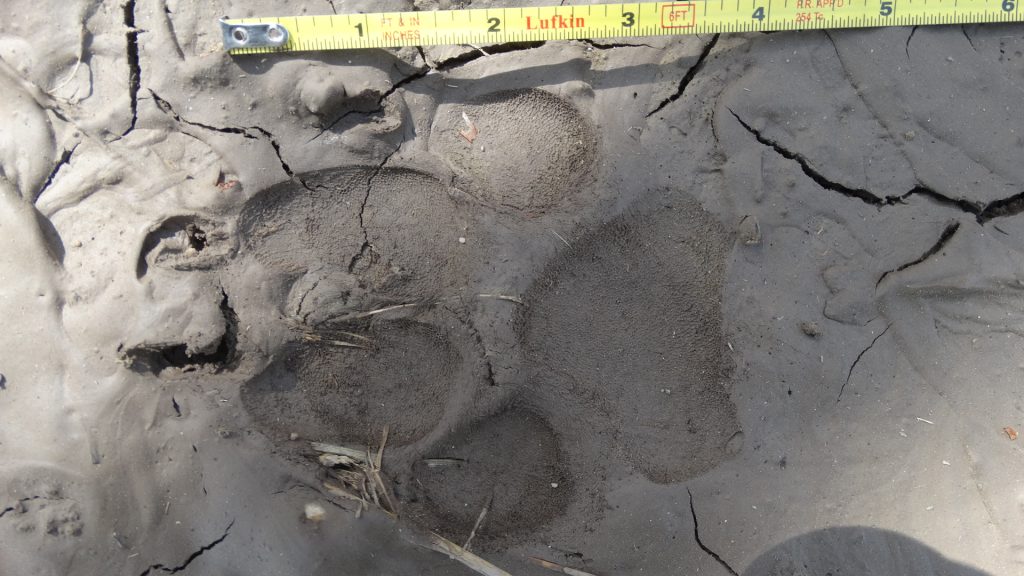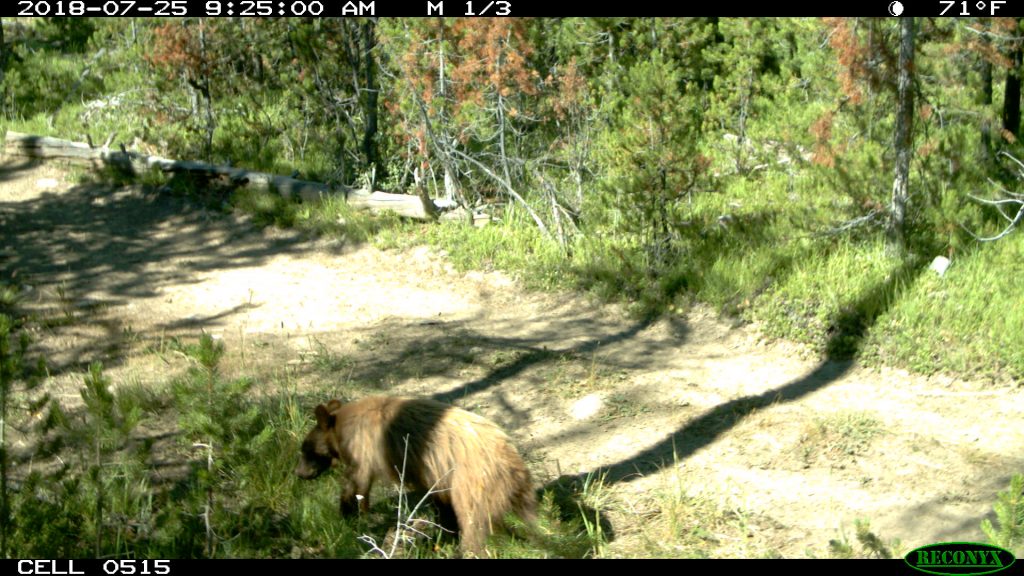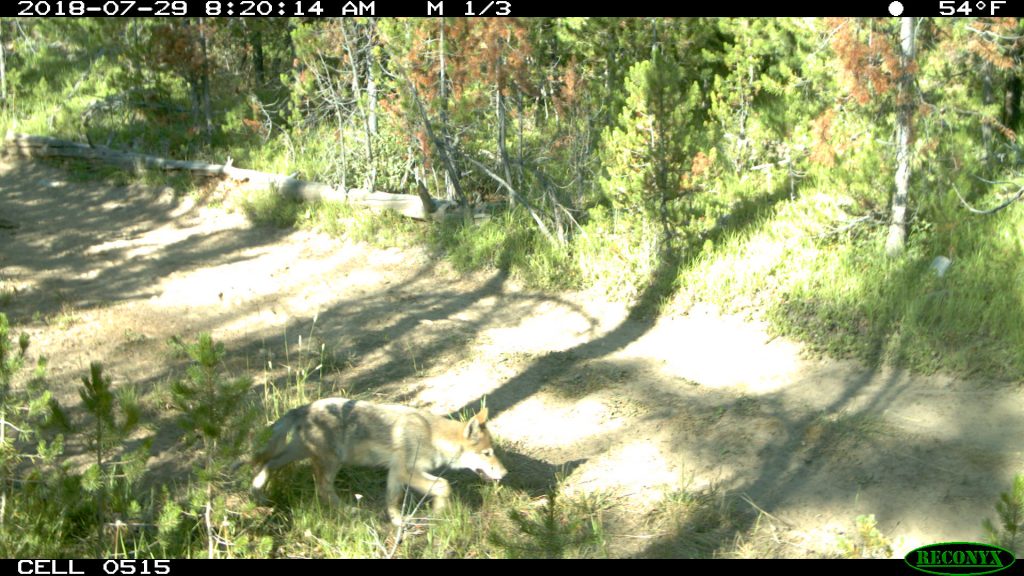Projects
Upper Big Hole Range Rider

Keeping working lands working — while reducing predator conflict on public rangeland
Since 2010, BHWC has deployed a professional Range Rider across six USFS grazing allotments in the Upper Big Hole on behalf of seven livestock producers. Each summer (July–September), cows are turned out onto public lands. The Range Rider provides a constant, non-lethal human presence — patrolling by truck, horseback, foot, and at night with photo monitoring — to track predator activity, cattle behavior, and overall range condition.
When wolves or other predators are detected, the rider alerts producers so livestock can be moved or managed proactively. If a depredation is suspected, the rider coordinates the rapid reporting chain between Montana FWP, USDA Wildlife Services, and the producer so that incidents are investigated, verified, and — when eligible — reimbursed.
What the Range Rider delivers:
-
Early detection of predator–livestock conflict before losses occur
-
A deterrent human presence on the landscape
-
Coordinated communication among agencies and ranchers
-
Faster response to injured or dead livestock
-
Monitoring of fences, water systems, riparian areas, and noxious weeds
-
Real-time knowledge of wolf and other carnivore movements
Although wolves are the primary source of conflict, the Big Hole watershed is also home to mountain lions and black bears — and is an active corridor for grizzly bear expansion. In 2016, our rider’s game camera documented the first confirmed grizzly in the Upper Big Hole in years, with additional sightings reported since. As carnivore populations grow and move, this program provides the eyes, presence, and coordination needed to keep both wildlife and working lands on the landscape.
Result:
A conflict-reduction model that protects livestock, supports wildlife management, and keeps public lands available for agricultural use — without sacrificing the health, safety, or character of the Big Hole Valley.
Wildlife Conflict Reduction
Helping livestock and wildlife coexist on the same landscape
BHWC’s Wildlife Programs are designed around a simple premise: healthy working lands and healthy wildlife are not mutually exclusive. Through proactive, non-lethal strategies, we reduce conflict before it becomes loss — for producers, predators, and the public.
Core program elements include:
-
Carcass Removal & Composting during calving and lambing seasons to prevent scavenger and predator attraction
-
Bear-Safety Training & Bear-Resistant Infrastructure (including can distribution) to keep bears wild and people safe
-
Range Rider Patrols on summer grazing allotments to monitor predator activity, cattle condition, and range health — and coordinate rapid response when needed
BHWC also participates in the regional landowner-led wildlife conflict network coordinated by the Heart of the Rockies Initiative, and provides carcass removal support to Sage Creek producers in the Centennial Valley through a reimbursement agreement with the Centennial Valley Association.
Outcome: A proven, collaborative model that lowers risk, maintains producer viability, and keeps wildlife on the landscape — without litigation, polarization, or delay.
Landowner-Led Regional Coordination
BHWC is part of a statewide, producer-driven effort to scale non-lethal conflict reduction across working landscapes.
The Big Hole Watershed Committee participates in a landowner-led regional coalition coordinated and led by the Western Landowners Alliance and the Heart of the Rockies Initiative. Together with several peer organizations, we are aligning and expanding proven strategies — such as range riding, carcass management, bear-safe infrastructure, and education — to reduce wildlife–livestock conflict while keeping ranching viable and large carnivores on the landscape.
Backed by Major Public–Private Investment
In 2024, the National Fish & Wildlife Foundation (NFWF) awarded nearly $5 million to launch a major grizzly bear conflict prevention initiative in Montana, administered by Heart of the Rockies in partnership with Montana Fish, Wildlife & Parks, with Western Landowners Alliance as a core partner. That federal investment complements a larger USDA-NRCS funding package for non-lethal conflict prevention for both grizzly bears and wolves through 2029.
BHWC is a funded sub-recipient of this initiative, expanding our on-the-ground capacity in the Big Hole to deliver and cost-share conflict-prevention tools where they matter most on the ground.
What the Program Funds & Deploys
-
Range Riding to deter predators and detect issues early
-
Carcass Removal & Composting to prevent predator attraction
-
Electric Fencing & Bear-Resistant Infrastructure to secure attractants
-
Education & Bear-Safety Outreach for communities and producers
Why It Matters
As grizzly bears and wolves continue to expand into the Big Hole — a natural migration corridor for large carnivores — proactive, non-lethal tools are essential to avoid losses, reduce agency response, and protect the social license for both ranching and wildlife conservation.
Outcome: A coordinated, producer-led, publicly leveraged system that turns conflict into coexistence — and keeps working lands and wildlife on the landscape together.
People & Organizations Involved
Montana Fish, Wildlife and Parks
Heart of the Rockies Initiative
Natural Resources Conservation Service
National Fish and Wildlife Foundation
Local ranchers
Project Documents & Resources
Montana Standard: Big Hole range rider tracks wolves toward middle ground
People and Carnivores: Ranching with Wolves in the Big Hole Valley (video featured above)
Project Photos









































Project MAP
Status
Ongoing
Type
Wildlife Conflict
